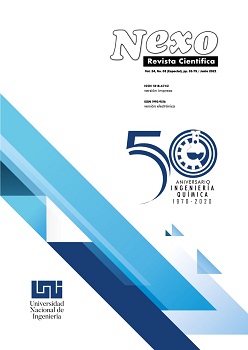Chemical engineering: a brief overview
DOI:
https://doi.org/10.5377/nexo.v34i03.11866Keywords:
Chemical Engineering, Programme, Latin America, NicaraguaAbstract
This article explores the origins of Chemical Engineering. It deals mostly with the emergence of the Chemical Engineering concept, the recognition of the field as an independent discipline, and its initial development. Although the conception of Chemical Engineering takes place in Great Britain, the discipline developed primarily in the United States, where it soon took the form in which we know it today. Two decades after its conception, the new discipline found its place in Latin American universities (Chile, Argentina). The discipline and profession developed as the industry itself grew rapidly, in response to a growing demand from society for the products of the chemical industry. The creation of Chemical Engineering as an academic programme was consolidated and was offered in many countries, both in those with a tradition in education in the area, and in others where the programme was a novelty.
Downloads
2124
Downloads
Published
How to Cite
Issue
Section
License
Copyright (c) 2021 Universidad Nacional de Ingeniería

This work is licensed under a Creative Commons Attribution 4.0 International License.
The authors who publish in Nexo Scientific Journal agree to the following terms:
- Authors retain the copyright and grant the journal the right of the first publication under the license Creative Commons Attribution License, which allows others to share the work with a recognition of the authorship of the work and the initial publication in Nexo Scientific Journal.
- Authors may separately establish additional agreements for the non-exclusive distribution of the version of the work published in the journal (for example, in an institutional repository or a book), with the recognition of the initial publication in Nexo Scientific Journal.
- Authors are allowed and encouraged to disseminate their works electronically (for example, in institutional repositories or in their own website) before and during the submission process, as it can lead to productive exchanges, as well as earlier and greater citation of published works.










